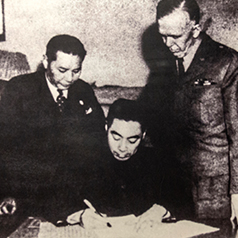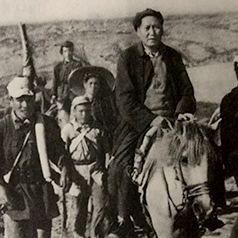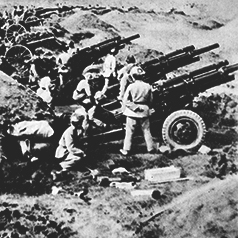
The KMT-CCP Reconciliation Failed and the Full-Scale Civil War (1945-1949)
The KMT-CCP Reconciliation Failed and the Full-Scale Civil War: an Overview
Conflicts between the Kuomintang of China (KMT) and the Chinese Communist Party (CCP) escalated after China won the War of Resistance Against Japanese Aggression. The post-war bilateral peace talks were able to reach some agreements, but a full-scale civil war could not be prevented. At the beginning of the Chinese Civil War, the KMT’s forces had the upper hand. However, the CCP started to turn the tide midway through the war and secured victories in three major campaigns. Meanwhile, the Government-controlled areas suffered hyperinflation and economic slump. The KMT was faced with an utter rout on the front line and struggled in the rear area. A regime change was on the horizon.
The KMT-CCP Reconciliation Failed and the Full-Scale Civil War: an Overview
Conflicts between the Kuomintang of China (KMT) and the Chinese Communist Party (CCP) escalated after China won the War of Resistance Against Japanese Aggression. The post-war bilateral peace talks were able to reach some agreements, but a full-scale civil war could not be prevented. At the beginning of the Chinese Civil War, the KMT’s forces had the upper hand. However, the CCP started to turn the tide midway through the war and secured victories in three major campaigns. Meanwhile, the Government-controlled areas suffered hyperinflation and economic slump. The KMT was faced with an utter rout on the front line and struggled in the rear area. A regime change was on the horizon.
(1) The Chongqing Negotiations and the Double Tenth Agreement
Following China’s victory in the War of Resistance Against Japanese Aggression, the long-established conflicts between the Kuomintang of China and the Chinese Communist Party resurfaced. The Chinese people, the United States, and the Soviet Union had high hopes for bilateral peace talks. Between August and October 1945, the two party leaders negotiated in Chongqing.
(2) The Political Consultation Failed and Full-scale Civil War
The negotiations between the Kuomintang of China and the Chinese Communist Party were held amid their military confrontations after the conclusion of the Double Tenth Agreement. Although ceasefire and army reorganisation agreements were signed, the conflicts escalated into a full-scale civil war.
(3) The NRA’s Early Advantage and the CCP’s Ascent
The full-scale civil war between the Kuomintang of China (KMT) and the Chinese Communist Party (CCP) started in late June 1946. The KMT-led National Revolutionary Army had an early advantage but the CCP-led People’s Liberation Army managed to turn the tide. The second half of 1948 ushered into the decisive stage of the war.
(4) The Three Major Campaigns
From September 1948 to January 1949, the Chinese Communist Party triumphed over the Kuomintang of China in the Liaoshen Campaign, the Huaihai Campaign, and the Pingjin Campaign, annihilating most of the latter’s elite forces. The latter lost control over the areas of north Yangtze River.
(5) Hyperinflation and Economic Collapse
In the late 1940s, the combination of civil war and corruption caused hyperinflation in the Government-controlled areas. The collapse of economy and people’s livelihoods was one of the fatal blows to the Kuomintang of China’s rule in Mainland China.








